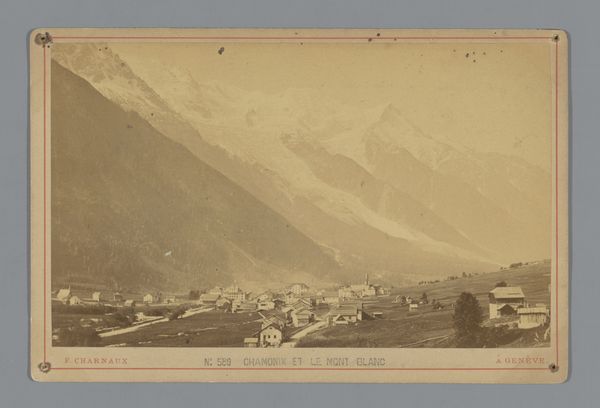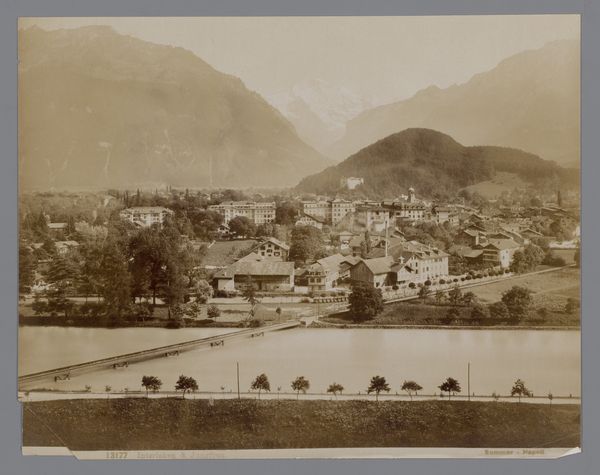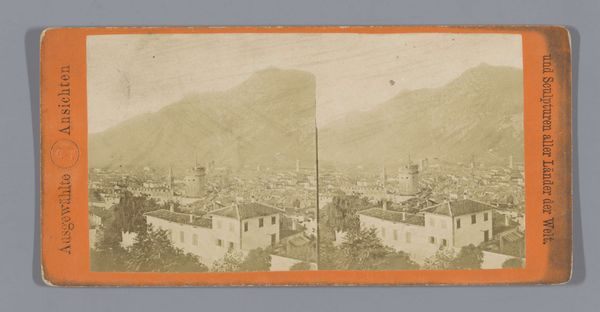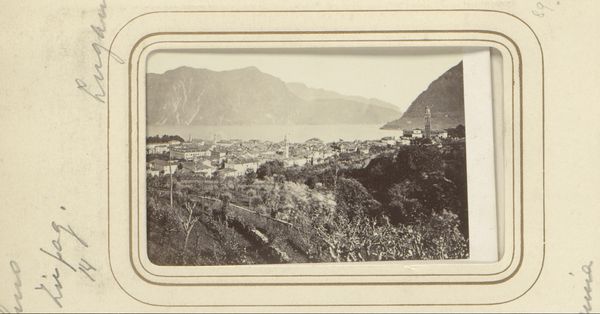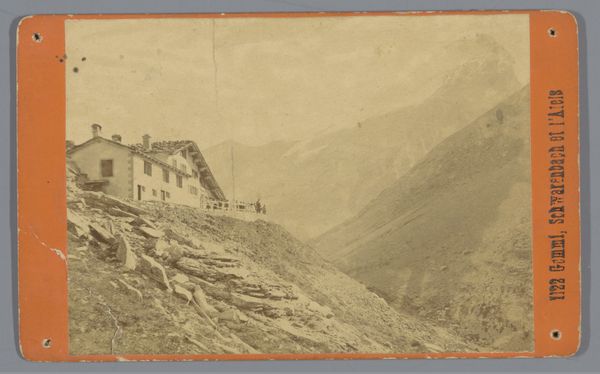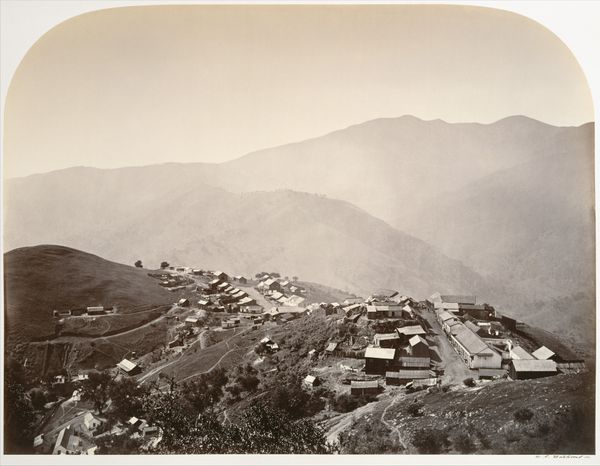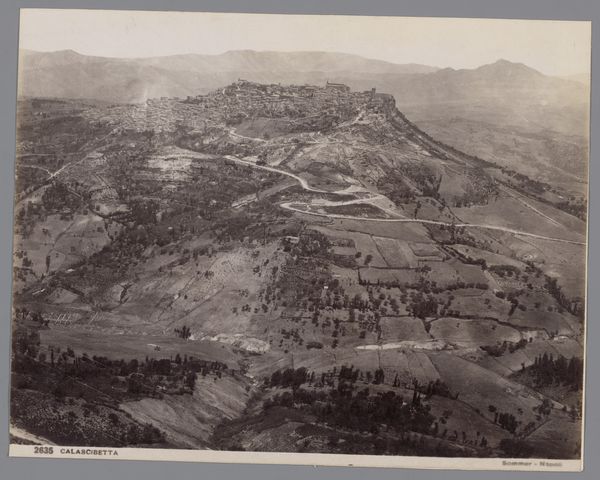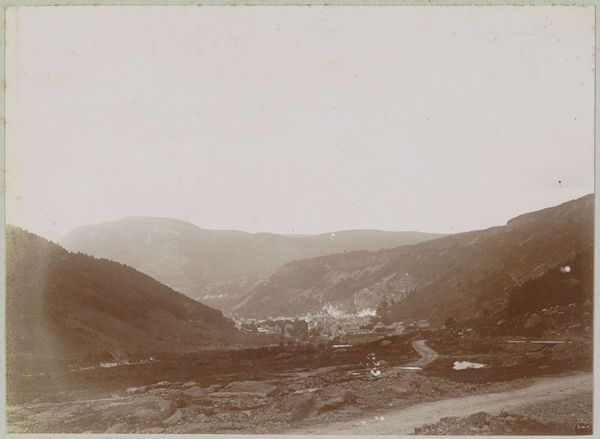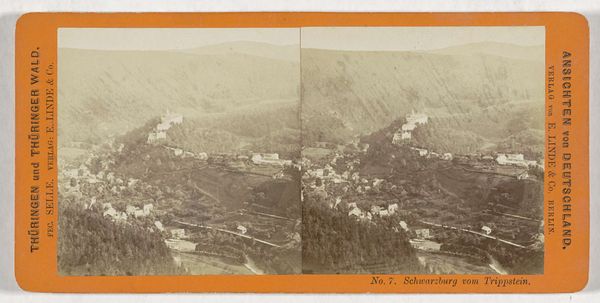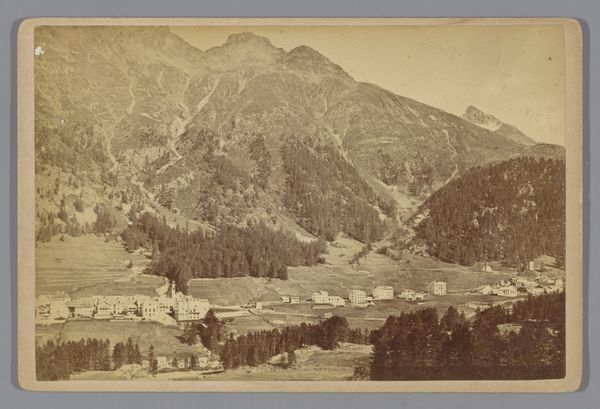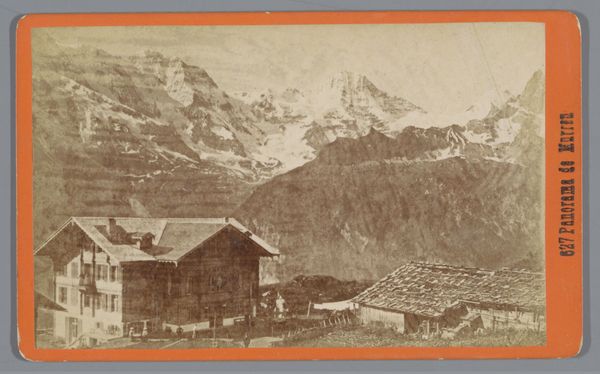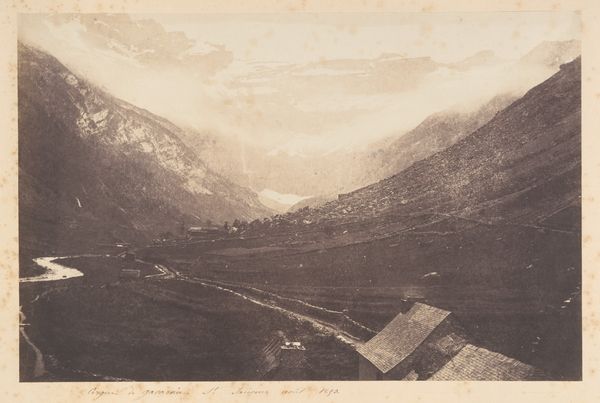
print, photography, albumen-print
# print
#
landscape
#
photography
#
orientalism
#
cityscape
#
albumen-print
Dimensions: height 154 mm, width 204 mm
Copyright: Rijks Museum: Open Domain
Curator: This is an albumen print, a photograph titled "View of a City, Iran" by Antoine Sevruguin, likely created between 1885 and 1910. Editor: My first impression is one of starkness and quietude. The tonal range is so limited—sepia verging on monochrome. It feels very isolated, this small village huddled beneath the weight of the mountains. Curator: Indeed, the composition is quite deliberate. Sevruguin employs a high vantage point, which accentuates the city’s situation in a valley, drawing our eye down into the arrangement of cubic architectural forms nestled there. Editor: Right, that positioning is strategic. It certainly creates a visual hierarchy, where the natural world dwarfs the human settlement. It reminds us of the power dynamics inherent in colonial-era representations of the East. The local is depicted through a Western lens. The landscape—the land itself—is always the ultimate prize. Curator: I see your point, but I also think we should consider the formal qualities. Note how Sevruguin uses light and shadow to create depth and texture. The mountains fade into the background, establishing an atmospheric perspective that emphasizes the vastness of the region. The buildings have a tangible solidity achieved through chiaroscuro, demonstrating mastery of light in this challenging process. Editor: Absolutely, technically it’s masterful. But it is important to remember that photography at this time, especially in regions outside of the West, became an indispensable tool for colonial administration, a visual instrument that not only captured but also interpreted and ultimately controlled the representation of othered spaces. Curator: A fair point. But isn't it also a valuable record of a time and place, regardless of the context in which it was created? The intricate detail captures aspects of daily life that written records often overlook. Editor: It can be, yes. But we must also stay vigilant against any romanticisation. The "orientalist" aesthetic, which infuses the image, reinforces specific stereotypes about Iranian life and landscapes, and we need to challenge, not perpetuate them. Curator: Well, considering these intertwined artistic, historical and contextual complexities gives us a more complete understanding. Editor: Precisely. I am left with the conviction that even apparently neutral images require careful engagement with their legacy.
Comments
No comments
Be the first to comment and join the conversation on the ultimate creative platform.
